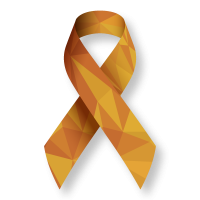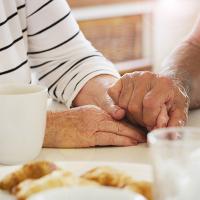Cancer is an alienating disease for everyone for so many reasons. And for those of us who are women with bladder cancer, the alienation is compounded by having a man’s disease that is treated in a man’s world.
I was diagnosed with bladder cancer in September of 2012. After recurrent UTIs and several rounds of antibiotics, I went to my GP’s office again because of the blood in my urine. She took one look at my urine sample and sent me directly to the ER. At that time, I knew absolutely nothing about bladder cancer.
A week after being released from the hospital, I was sitting in my urologist’s waiting room for the first time. As I looked around I realized I was the only female patient. When I went into the exam room, I saw medical charts of male anatomy on every wall. There was a plastic model of a penis on a countertop, pamphlets about erectile dysfunction and PSA levels.
A urology practice is a man’s world. In 2015, National Public Radio reported that only 8% of urologists in the US are women, the biggest disparity of any medical specialty. For obvious reasons, the majority of urology patients are male.
Of course, women need urologists, too. Everyone, after all, has kidneys and a urinary tract. But as I learned more, I discovered that bladder cancer is primarily a man’s disease. They are three to four times more likely to be diagnosed than are women. The American Cancer Society predicts that 18,540 women in the US will be diagnosed with bladder cancer this year, compared with 60,490 men.
However—and this is a big “however”—when women are diagnosed they generally have a worse prognosis, are more likely to be at an advanced stage, and have a higher mortality rate.
Researchers take this health disparity seriously and have discovered the following:
- Women face a diagnostic lag because primary physicians fail to make urological referrals in a timely fashion
- Women are susceptible to a more aggressive type of bladder cancer
- Women and their doctors make different treatment choices than men and their doctors, opting less frequently for bladder removal
The first of these facts hits home hard for me.
In January of 2012 I was diagnosed with a UTI and three months later I called in to my doc to tell her I couldn’t shake the UTI. There was still blood in my urine. She diagnosed me with another UTI over the phone and prescribed antibiotics. Almost nine months later, the blood was significant enough to get everyone’s attention, and I went to the ER.
Luckily for me, I was diagnosed with stage one, low grade cancer and have been in remission since I completed treatment. Luckier still, the urologist on call for the hospital that night was, as my mom used to say, “a good egg.” He is still my urologist.
This is why, when I saw him in the office that first time, I was still in shock, having just received my diagnosis. But I came with pages of questions. He had already sent me in the mail the National Comprehensive Cancer Network guidelines for treating bladder cancer, so I came into his office with background information.
When he was explaining my diagnosis he turned to show me the chart of the urological system on the wall. It was of male anatomy. There was no chart with female anatomy. It was hard to see only male anatomy. It was as if my own gender had been erased. But my doc was clearly more affected by this than I was. He was mortified.
I can tell you that his reaction to the situation made a much bigger impression on me than the absence of the female chart. It’s one thing to walk into a man’s world, to be the odd one out, and to be surrounded by male anatomy. But It’s another thing for your doctor to notice the setting, to see the patient, and to understand the problem.
The next time I went to his office, charts of both the male and female anatomy were prominently displayed. Eventually, I noticed more brochures in the exam rooms about women’s urological problems and posters about products and drugs for women. When I’m waiting for my cystoscopy, I look around and see images and reflections of men and women.
My presence in his office has become normalized. I’ve stopped feeling like I accidentally opened the door to the men’s locker room, or that I’m trespassing. Really, what all of us need, especially when we have cancer, is to feel like we belong somewhere. We need to know we’re not alone. When I walk into my urologist’s office now, I feel like I walk into a world where I belong.
Kerri was diagnosed with bladder cancer in 2012 and has been in remission since 2013. She writes a blog, "Cancer is Not a Gift," which is sponsored by ChicagoNow. She has been a writing teacher for more than 25 years and currently teaches in the South Suburbs of Chicago at Governors State University. She also conducts expressive writing workshops for people and families touched by cancer, most recently at Gilda's Club in Chicago.







Post your comment
Comments
No one has commented on this page yet.
RSS feed for comments on this page | RSS feed for all comments